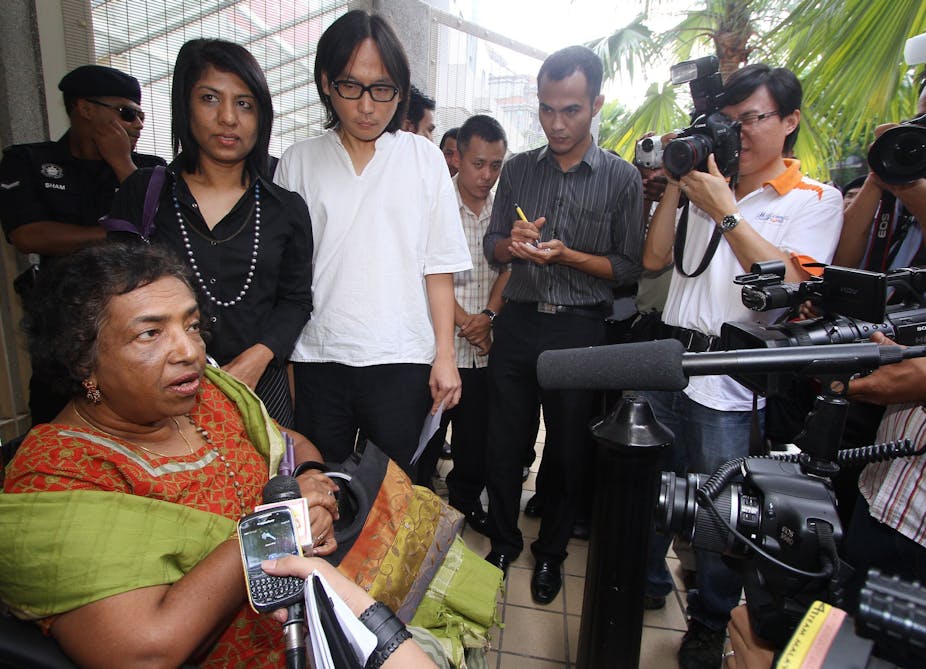The Gillard government’s proposed “Malaysian solution” for dealing with asylum seekers who arrive in Australia by boat has come under considerable scrutiny.
Under the agreement Australia will send 800 asylum seekers who arrive by boat to Malaysia and in return will accept 4000 refugees certified by the United Nations High Commissioner for Refugees (UNHCR).
But does the deal place Australia at risk of violating its international obligations to refugees and asylum seekers?
The Conversation spoke with UNSW’s Professor Jane McAdam, Director of the International Refugee and Migration Law Project, Gilbert + Tobin Centre of Public Law.
What are Australia’s obligations to asylum seekers under international law? Does the ‘Malaysian solution’ fit these?
Australia has obligations primarily not to return anybody to a place where they would face persecution or other forms of serious harm such as torture or cruel, inhuman or degrading treatment or punishment, or arbitrary deprivation of life.
This requires, at a bare minimum, the assessment of individuals’ international protection needs.
In other words, before sending an asylum seeker anywhere else, States must ensure that this will not result in them being subjected to these forms of serious harm.
The problem with the proposed Malaysian Solution is that we seem to have a blanket designation of Malaysia as a safe country to which people can be sent. Putting aside for one moment the question of whether we should be engaging in a regional framework of this nature at all, my primary concern is that we ought to be conducting a case by case determination of whether Malaysia is a safe place to send particular individuals. That’s what our non-return obligations oblige us to do.
Would this deal place Australia in breach of our international obligations? Have we been in breach of our obligations in recent times with our policies?
It may do – it depends on the facts and there is a risk that it could.
What I would say is that Australia’s non-return (non-refoulement) obligations under human rights law – the duty not send people back to torture or cruel, inhuman or degrading treatment or punishment, or to arbitrary deprivation of life –has not yet been implemented into domestic law.
Australia is therefore at risk of breaching its obligations precisely because it does not systematically examine on a case by case basis whether people have a risk of such treatment if they are removed from Australia. This needs to be assessed not only with respect to their removal to their home country, but also to Malaysia (or any other country to which their removal might be proposed).
Meeting our international obligations is different from achieving international best practice. What would need to happen for us to reach best practice?
In the scheme of things Australia has a very good resettlement policy and refugee status determination procedures for onshore arrivals. It is with the offshore arrivals that we see quite significant problems.
What I would like to see is political leadership to explain to the general public that asylum seekers are people who are fleeing serious forms of harm – and often they are fleeing for their lives.
They are exercising a right under international law to seek asylum, to seek safety from persecution. Furthermore, relative to the rest of the world, Australia receives an extremely small proportion of asylum seekers: only 2 per cent of the industrialised world.
The Australian government keeps trying to create more and more so-called “solutions’ that are in fact counter-productive. Australia’s policies are not going to stop people from fleeing serious danger. To think they could is to fundamentally misunderstand the nature and causes of refugee flight.
If you look at where Australia is situated geographically, we are one of the few countries that has signed the Refugee Convention and that respects human rights law. It is one of the few countries in the region that can actually provide protection.
Can unaccompanied minors be treated differently from other refugees?
The overriding principle with children is that the best interests of the child have to be the primary consideration in any decision affecting them. That obligation arises under international law. The Australian government says that it recognises that.
It would be difficult to argue that security interests or border control somehow trump the interests of the child as a primary consideration unless you had evidence in individual cases that a particular child posed a particular security risk. As far as I’m aware, those sorts of arguments haven’t been mounted.
I think it would be very difficult to suggest that it would be appropriate to send unaccompanied minors to Malaysia for processing. In any case, irrespective of whether it is a child or an adult, an individual assessment of that person’s protection needs is required before they are sent anywhere, which includes an assessment of whether that person would be safe in Malaysia.
Given some of the serious concerns that have been raised by Amnesty International, Human Rights Watch and other organisations about the treatment of asylum seekers and refugees in Malaysia, all of whom are regarded under Malaysian law as ‘illegals’, I have grave reservations about the reception conditions for people Australia might send there.
Although there might be special arrangements made for such people, overseen for example by UNHCR and others, that in itself does not automatically mean that Australia’s removal of them would be consistent with international law.

